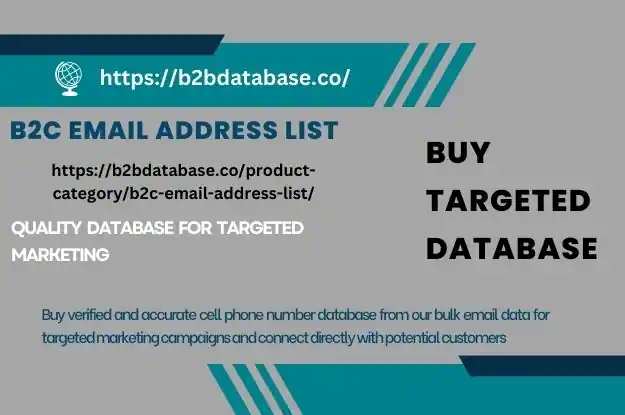Building a Quality German Consumer Email List for Focused Marketing by Understanding the German Market
It is important to understand this market before actually building a list, and note the following features of the German consumer market:
Privacy-conscious: Germans are very
particular about their privacy, and hence, they have Germany Consumer Email List strict data protection laws in place. Your list-building practices must be in compliance with the GDPR regulations.
Quality-oriented: German customers believe in investing in quality and authenticity. This trait should be reflected in your list.
Digital-savvy: Germany has one of the highest internet penetration rates.
Typify Your Perfect Customer:
Demographics – Age, Sex, Location, Income, Education
Interests – Hobbies, Lifestyle, Consumer Behaviour
Online Behaviour – Websites Visited, Social Media, Search History
Source Credible Data:
Data Brokers – Pre-verified Consumer Data from Reputable Data Brokers
Publicly Available Data – Valuable sources include social network profiles, online forums, and government records.
First-Party Data: If you have a website or a mobile application, acquire email addresses directly.
Use Email Verification Services:
Other Block Site : Bulk Database
Ensure that the email addresses
on your list are valid and active. This would prevent bounce rates and boost better deliverability.
Segment Your List:
You need to segment your list into smaller chunks, demographics, interest, or behavioral grounds. It will definitely enable better, more personalized marketing campaigns.
Keep on Updating and Cleaning:
Update your list from time to time to capture any sort of changes in consumer information.
Remove all the invalid and inactive email addresses from your list in order to keep it vital.
How to Create Engaging Email Content
Relevance: Your message has to be relevant to the audience that it addresses. That means one should align his content to the special interest and needs of the target audience or consumer.
Personalization can be done through dynamic content in addressing recipients by their names, or referencing them on their interests.
Value Proposition: Should be addressed directly, defining what benefits your product or service will have on the customers.
Call to Action: Call upon the recipient to take action in view of your e-mail, including but not limited to purchasing a product or visiting a website.
Mobile Optimization: E-mails must be optimized so they can be adequately viewed on mobile devices.
Leveraging Email Marketing Tools
Email Marketing Platforms: Use such platforms as Mailchimp, Constant Contact, or HubSpot to keep lists of contacts, create and send campaigns, and analyze the performance thereafter.
A/B Testing: Run tests with various subject lines, content, and calls-to-actions with the intention of refining campaign results.
Automation: Automate email workflows to further nurture leads into customers.
Best Practices for Email Deliverability
Authentication: Authentication
with SPF, DKIM, and DMARC improves your sender reputation.
Engagement: Encourage recipients to engage Mailing Data with your emails by providing links, buttons, and social sharing options.
Content Quality: Avoid spammy behaviors like over-linking or misleading subject lines.
Conclusion
You need to be very tactful when building a quality German consumer email list. It involves some careful planning with regard to sourcing data and effective creation of content. If you keep the above tips in mind and utilize proper tools as well, then surely you would be able to create a targeted list for better long-term success and engagement in the German market.


